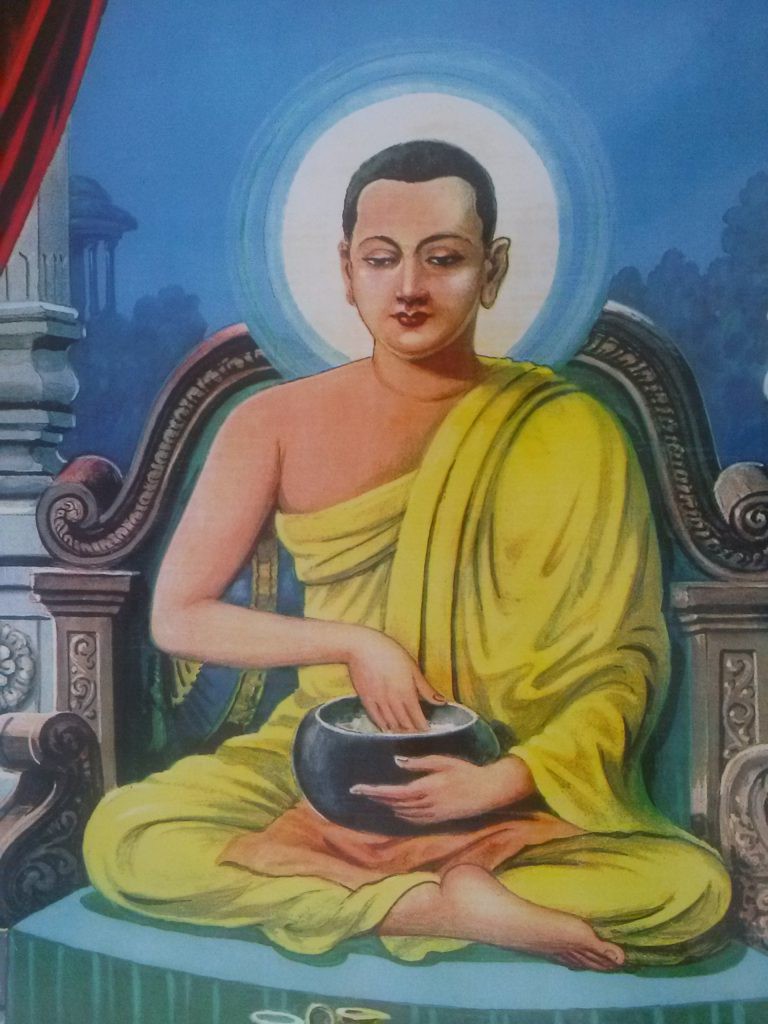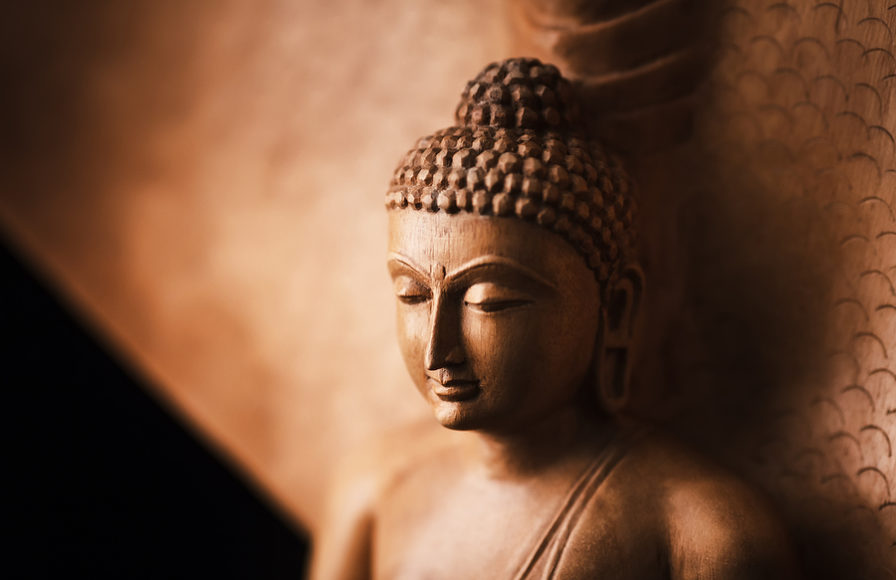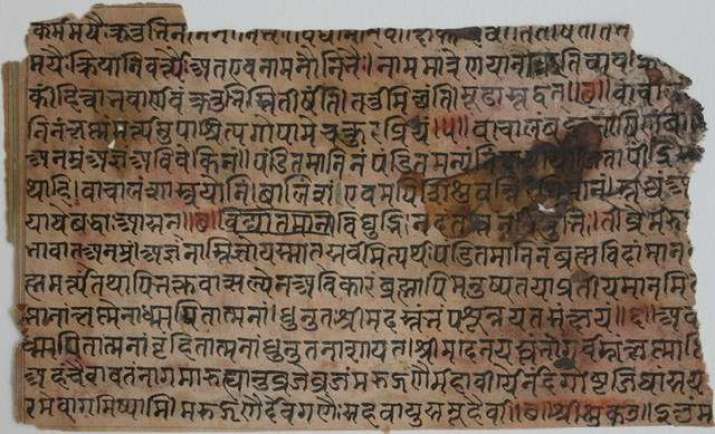For many centuries after Buddha’s demise, Buddhism strived in its earlier form. But by the advent of 1st century AD, anew doctrine emerged which was different and distinct in ideas and practices from the previous orthodox Buddhism. These schools have been divided into two Yanas or ‘Vehicles’ or ‘Paths’. These two are the Hinayana and Mahayana. ‘Yana’ is referred to as the vehicle that one takes to reach from the sufferings to enlighten.
Hinayana

Early Buddhist teachings gave more importance to self-realization and effort in achieving nirvana. Hinayana and Mahayana The ideal of Hinayana is individual salvation, thus it is considered a lesser vehicle. The Hinayana or Theravada doctrine believes in the original teaching of Buddha or the old, respected path of others.
They don’t believe in Idol Worship. Hinayana teaches that to attain individual salvation the path goes through self-discipline and meditation. It should be noted here that Asoka patronized Hinayana. Pali, the language of masses was used by the Hinayana scholars. It is also called the “Deficient Vehicle”, the “Abandoned Vehicle”, Stharvivada or Theravada meaning “doctrine of elders”.
Hinayana stresses righteous action and the law of karma. The Hinayana ideal is Arhat, the one who strives for his own redemption. Hinayana regards Buddha as a man, of extraordinary knowledge, but just a man, therefore, does not worship him.
It is developed around the acts of Buddha. Hinayana believes in salvation by works, that each man should work for his own salvation. Hinayana scriptures are written in Pali, and founded on the Tripitaka. Hinayana or Theravada traditions are followed in Sri Lanka, Laos, Cambodia, other South-east Asian countries.
Mahayana

Mahayana believes firmly in the spirit of Buddha’s teachings. Mahayana scriptures are written in form of Sutras in Sanskrit. This form of Buddhism gained recognition at the time of Kanishka. The Third Buddhist Council recognized these two forms of Buddhism. It believes in salvation by faith.
Mahayana is developed around the symbolism of Buddha’s life and personality. The Mahayana ideal is salvation for all that is why it is called a greater vehicle. Mahayana holds the law of karuna/compassion over and above the law of karma. Mahayana upholds the ideals of Bodhisattva/the savior – who is concerned about the salvation of others.
This sect believes in the divine qualities of Buddha and thus believes in Idol Worship. It is also known as the Bodhisattva Vehicle. Hinayana and Mahayana. Mahayana Buddhism is spread across India, China, Japan, Vietnam, Korea, Singapore, Taiwan, Nepal, Tibet, Bhutan, and Mongolia. Tibetan Buddhism is a tradition of Mahayana only. The fundamental principles of Mahayana doctrine are based on the possibility of universal liberation from suffering for all beings. Therefore this is considered the “Great Vehicle”.
The doctrine of Bhakti has evolved as a characteristic feature of Mahayana Buddhism. “Nagarjuna” was the most outstanding exponent of Mahayana Buddhism.
Spread & Popularity of Buddhism

The simplicity and relevance of Buddhism teachings attracted common masses towards it. The magnetic personality of Mahatma Buddha played important role in the rapid popularity of Buddhism. Use of language of common masses & hence appeals to Buddhism.
Buddha uses the Pali language. The institution of the monastery (Sangha) contributed immensely to the spread and popularity of Buddhism because it provided unity & guidance to Buddhist monks. It maintained discipline & purposefulness among monks.
The degenerated state of the Brahmanical order also contributed to the rapid growth of Buddhism because common masses were seething discontent in Brahmnical order they already looking for a new system when Mahatma Buddha emerged on the scene. Patronage of some of the most prominent rulers such as Ajatshatru, Kalashoka, and Ashoka & Kanishaka contributed immensely to the popularity of Buddhism. Buddhist councils were held during the reign of these rulers. According to Buddhist texts number of monks was send by Ashoka to various parts of the world to spread the message of Buddhists after the 3rd Buddhist council. Mahendra & Sanghmitra – Srilanka Son & Uttara – Suvarna Bhumi. Mahadev – Mysore. Dharmarakshit – Himalayan region & Maharakshita went land of Greek.
Merchants & traders also contributed immensely to the popularity of Buddhism. Merchants & traders issued a huge donation to the Buddhist monasteries. They patronize Buddhist monks. Many monks used to move alongside Merchants & traders to various parts of the world. These monks used to spread messages of Buddhism on the way. This process was responsible for the spread of Buddhism to central, South-east Asia, etc.
Many Buddhist monks were invited by rulers of neighboring countries & they carry the message of Buddhism. In the 1st Century AD, the Chinese ruler sends his ambassador to India to invite a Buddhist monk. These ambassadors carried Dharmarakshit & Kasyapa Matanga to China. They translated Buddhist literature into Chinese.
Kumarjiva was a prominent Buddhist scholar. He went to China in 401 AD. He became president of Buddhist scholars in China. Dharmadeva was another prominent Buddhist scholar who went to China in 1001 AD. From China, Buddhists moves to Korea & Japan. Chinese travelers visited India to carry Buddhist literature. Fa-Hien visited India during the opening decades of the 5th century AD (399-415AD). Hieun-Tsang visited India during 1st half of the 7th century (629-645 AD).
The decline of Buddhism in India
Having emerged in 600 BC, Buddhism was phenomenally successful in India as well as in many other parts of the world. But beginning in 4th century AD. Buddhism gradually declines in India & it was no longer the faith of a significant percentage of the Indian population. This decline of Buddhism inland of its origin was the outcome of several factors.
Buddhism became complex with time. New Ideas & Philosophies were developed by Buddhist teachers over a period of time. In beginning, Buddha was considered as teachers but Mahayanist transformed Buddha into God. This complexity eroded the mass appeal of Buddhism.
Sanskrit became the language of Mahayana Buddhism. As a result of which, it lost touch with the common masses. The Buddhist monastery amassed huge wealth as Mahayanist received gifts of gold & silver. Monk started living luxurious life which corroded their character & paved the way for. The revival of Brahmanical religion in a new form known as Vaishnavism attracted common masses towards it Vaishnavism was free from ritual & sacrifices, priestly domination & emphasized the direct relationship between god & devotee through Bhakti.
Loss of royal patronage also contributed to declining because Gupta rulers patronize Vaishnavism. The anti-Buddhist attitude of rulers like Pushymitra – Sunga also contributed to declining. He destroyed Buddhist monastery & killed Buddhist monks & award of 100 dinars was announced on the head of each Buddhist monk.
The decline of trade & commerce, arts & crafts also played role in the downfall of Buddhism because the inflow of donations to the Buddhist monastery stopped. Foreign invasions were also responsible for the decline of Buddhist. Hunas led Mihirkula to destroy Buddhist Monastery. Turks also attacked & destroyed the Buddhist monastery because of their wealth.
Absence of a great personality like Mahatma Buddha when Buddhism facing challenges from various sides hastened the process of its downfall. Scholars like Shankaracharya shattered credibility & reputation by defeating Buddhist monks in discourses & discussion. He adopted good elements from Buddhists & integrated them with mainstream Hinduism.
Fragmentation of Buddhism into various sections also affected its popularity & mass appeal. By 400 AD, there were more than 12 dozen sections of Buddhists who followed different ideas & philosophies. This process of division started at the time of the 2nd Buddhist council & continued to gain momentum thereafter.

